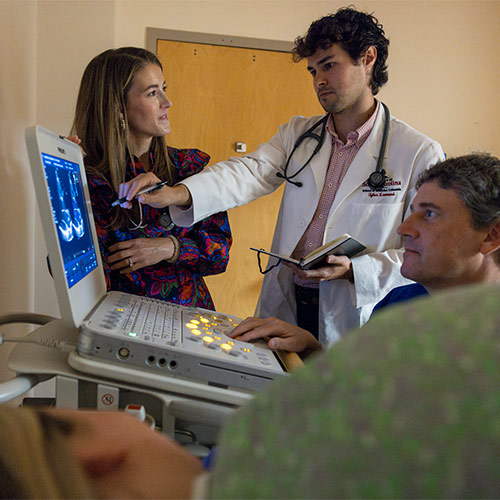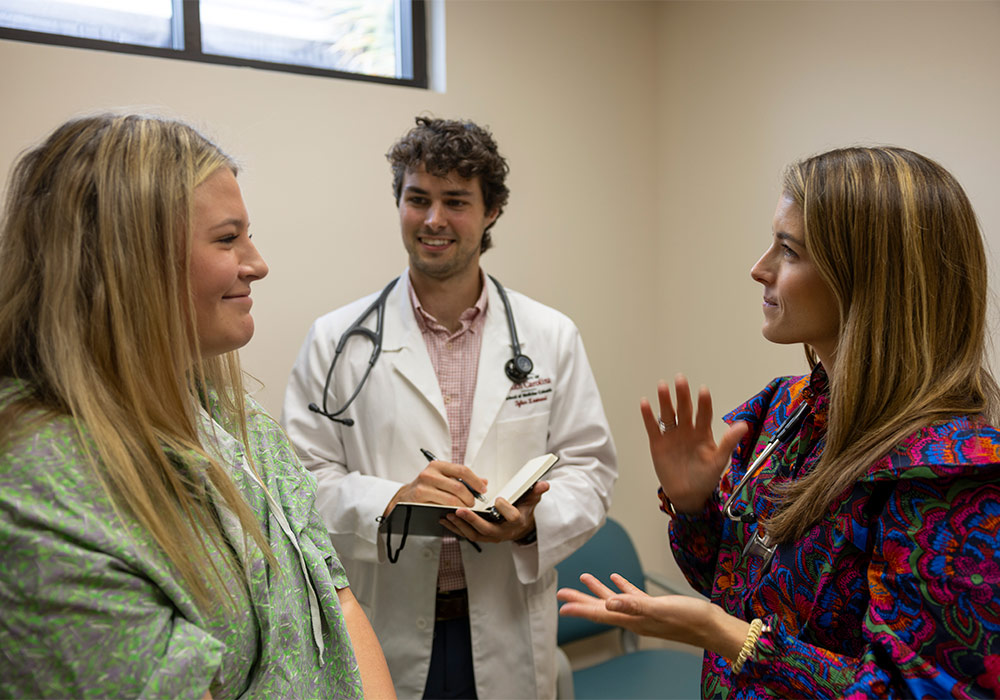Imagine your child is diagnosed with a heart condition. You need to take unpaid time off to get her to doctor’s appointments, and you don’t have reliable transportation to get to specialists in Columbia, Greenville or Charleston — a few hours from your home.
Enter the South Carolina Center for Rural and Primary Healthcare at the USC School of Medicine Columbia.
The center works to improve health care delivery for rural communities by operating and facilitating a range of programs. Through one, the Department of Pediatrics sends subspecialists — doctors who specialize in over 18 conditions such as children’s asthma, heart ailments or diabetes — into areas outside the state’s urban hubs.
It helps the patients, who can be seen by a specialist nearby instead of making a long trip. And it improves the odds that they will make their appointments. In the past, specialists often had no-show rates of 50 percent or higher from out-of-town patients.
“Rural health care is so different because of distances and access to providers,” says Kevin Bennett, the center’s director. “For example, there is no way a place like Lancaster could or should support a pediatric cardiologist, right? But those kids deserve that care in person as well.”
The subspecialists go to smaller communities and set up clinics in a leased space or at a primary care doctor’s office. The no-show rates go down and patient outcomes improve. When children see specialists on a regular basis they are able to better manage their conditions and avoid the emergency room.
“Asthma would be a classic example,” says Michele Stanek, the center’s associate director. “How do we make sure that kids with significant asthma or moderate asthma are seeing a pediatric pulmonologist and are being managed with their medical home but also have access to that specialty care? We can’t put a pediatric pulmonologist in every rural community in South Carolina. There aren’t enough pediatric pulmonologists for that, and there’s not the business case for that.”

The clinics are strongly supported by Dr. Caughman Taylor, the chair of pediatrics at both the USC School of Medicine and the Prisma Health Department of Pediatrics in Columbia. He says the program is particularly important in South Carolina, a state with a high rural population where about 60 percent of all births are to Medicaid patients. For the children served in the center’s subspeciality clinics, Taylor estimates the rate of Medicaid patients at around 70 percent.
“When you see that, you realize these families also face other socioeconomic determinants — that’s food, that’s transportation,” Taylor says. “Our belief was that if we went to where the patient was, guess what? They would show up. The family living in Bamberg can get a ride over to Orangeburg to come to one of our clinics, but to get a ride all the way up to Columbia, an hour and a half away, it’s much more difficult.”
Subspecialists in the pediatric department in Columbia provide 43 clinics each month, sometimes working with local physicians and other specialists that may already be in the community.
“We don’t want to diminish or replace access. We want to augment access,” Stanek says. “There are a lot of practices and physicians and nurse practitioners who have been historic providers to these communities. We do not want to in any way be disruptive to those existing relationships or to their practices.”
Dr. Margaret Gray, a pediatric cardiologist who graduated from the USC School of Medicine Columbia in 2011, travels from Columbia to clinics around the state to see patients — from birth to young adult — with heart conditions.
“By taking that travel burden off the patients, it allows us to help them just focus on their child’s health care needs,” Gray says. “It’s a neat way to meet patients where they are and learn more about their community.”
The effort also helps educate the next generation of physicians as medical students and residents accompany the subspecialists.
“It exposes them to these communities in South Carolina where there is a need and they get to see, ‘Hey, this is a pretty cool town.’ So they may be more likely to practice there in the future,” Taylor says. “But more importantly, they’re seeing how the parents are appreciating us coming there. They’re seeing how going to the patient makes a difference."
